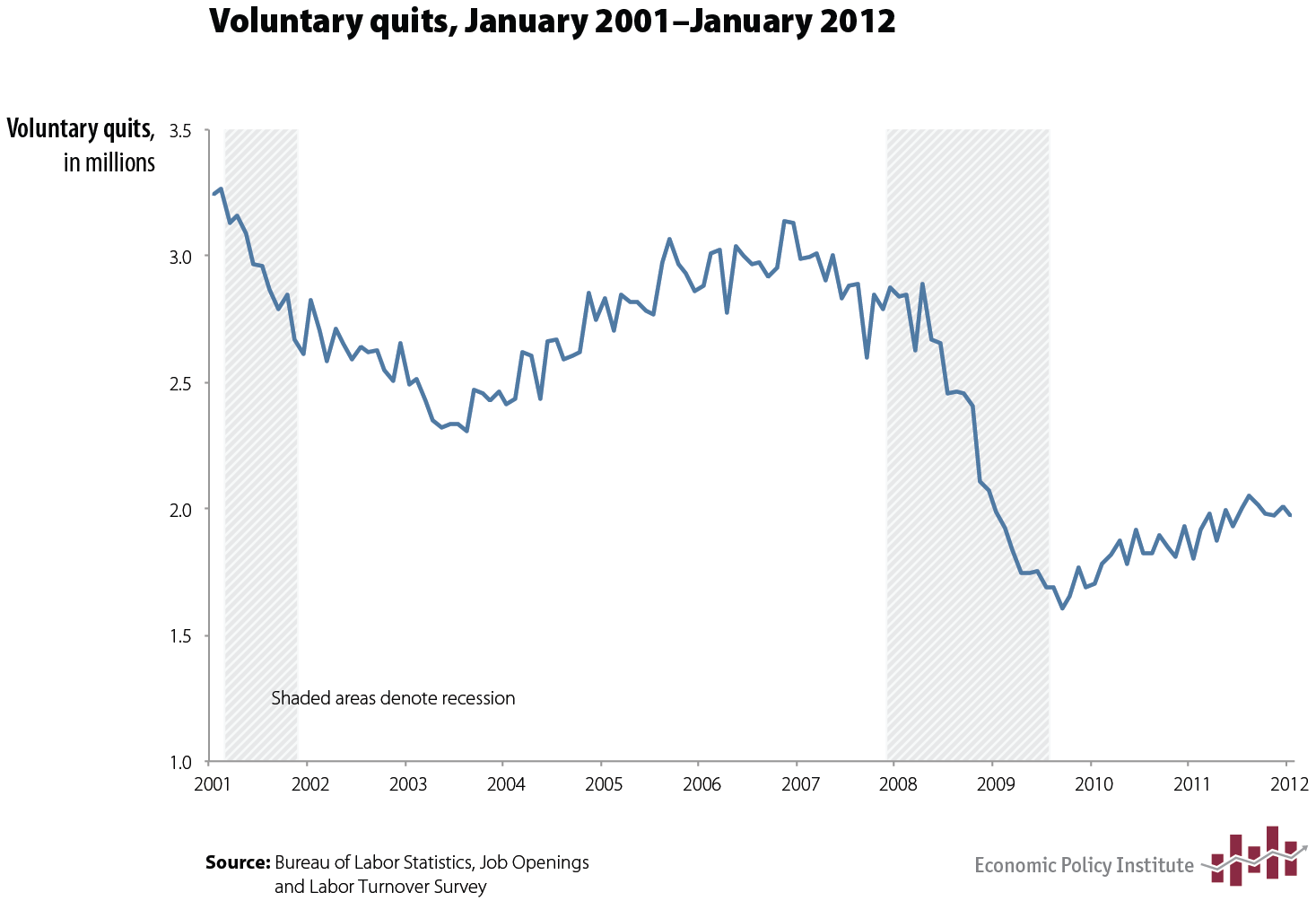Low level of voluntary quits should temper recent optimism about the labor market
By Heidi Shierholz and Arin Karimian
March 14, 2012 - EPI
Workers who voluntarily leave their jobs are referred to as “voluntary quits.” Voluntary quits are high when job opportunities are plentiful and employed workers have the flexibility to look for jobs that pay better and more closely match their skills and experience.During downturns, on the other hand, the number of voluntary quits drop as job opportunities become scarce.
>
By way of reference, in Dec. 2007, the official start of the Great Recession, there were 2.9 million quits. In January of this year, there were 2.0 million quits. While Januaryfs figure is an improvement from the post-recession low of 1.6 million quits in Sept. 2009, itfs still more than 30 percent below the pre-recession level and has seen no improvement since last summer.
This lack of improvement in voluntary quits is a red flag amidst the recent optimism about the labor market. If it were true that job opportunities improved substantially in the last few months, we would have seen voluntary quits increasing as not just unemployed workers, but also the currently employed, snapped up those opportunities. This has not been the case.
This continued low level of voluntary quits hurts all workers — both the employed and unemployed. The employed are unable to find new, better-paying jobs and employers see the limited number of job openings and feel no pressure to substantially increase wages in order to retain their workers. The result has contributed to a dramatic slowing of wage growth since the start of the recession.
